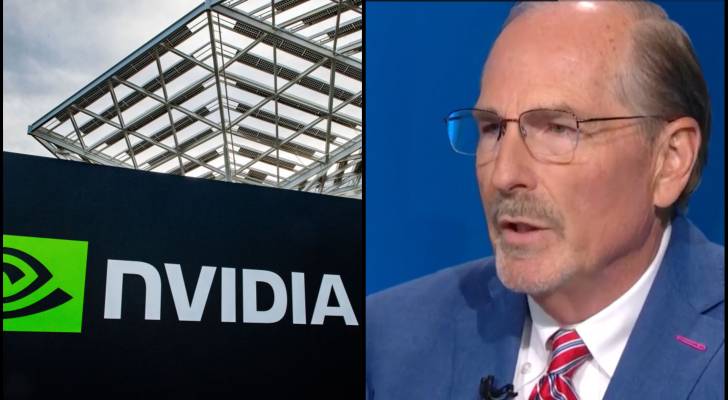If you’re invested in AI, you might want to pay attention.
Bill Smead, founder of Smead Capital Management, says the market frenzy around AI has all the signs of a bubble, driven by the momentum of stocks like Nvidia.
“We’re in the crazy stage,” Smead told Business Insider, comparing today’s market to the eve of the dot-com crash in late 1999. (1)
He points to valuations he feels are untethered from reality.
Since early 2023, Nvidia’s value has jumped twelvefold to $4.4 trillion, while Palantir has skyrocketed twenty-eight-fold to $420 billion.
Meanwhile, AI firm CoreWeave’s valuation just hit $60-billion on just $1.2 billion in quarterly revenue.
“We’re bumping up against history real hard now,” he warns, especially worried about many Americans have household wealth tied to Big Tech.
Here’s what you should know to avoid taking a hit.
Smead said AI firms’ potential success is overcapitalized and predicted that “when this thing breaks,” stocks could trade at a fraction of current prices.
That would have a domino effect in U.S. equity markets that are already heavily weighted in the technology sector. Reuters notes that the sector’s value makes up 34% of the S&P 500, higher than the peak concentration in March 2000. (2)
Read more: Robert Kiyosaki warns of a ‘Greater Depression’ coming to the US — with millions of Americans going poor. But he says these 2 ‘easy-money’ assets will bring in ‘great wealth’. How to get in now
Smead says AI stocks could see a 40% drop in value daily as occurred in the dot-com bust.
“That is going to be spooky,” he said.
He and other market observers are concerned about another development that harkens back to the dot-com bubble: increasing ties between major players. Case in point? Nvidia’s plan to invest up to $100 billion in OpenAI.
When companies invest in one another and share customers, it creates ‘circular’ financing — a self-reinforcing feedback loop.
Paulo Carvao, a senior fellow who researches AI policy at the Harvard Kennedy School told Bloomberg that the same thing happened in the late 1990s. At that time, he said, startups made circular deals around advertising and cross-selling. (3)
“Companies bought each other’s services to inflate perceived growth,” Carveo noted. “Today’s AI firms have tangible products and customers, but their spending is still outpacing monetization.”
For his part, Smead says his fund has mostly steered clear of tech and invests in energy, construction, health care, retail and Real Estate Investment Trusts (REITs). (4)
He frames them as “out-of-favor” sectors with merit, solid sectors rather than high-flying bets.
These industries tend to have more stable cash flows or tangible assets and are less prone to hype-driven valuation multiples.
But they have their risks, too. There are regulatory shifts, interest rates and the cyclical nature of energy or housing.
So what’s an investor to do?
No sector is bulletproof, so your goal should be to cut down the chance that a single downturn wipes out large parts of your portfolio.
Going all-in on one sector is risky because you’re putting a lot of cash in one area, so you’re more vulnerable to a valuation collapse.
Or worse, if assets fall, you might get trapped into selling at a bad time. You’re also missing out on gains elsewhere when your money is locked into one sector, so there’s the opportunity cost.
Smead isn’t encouraging investors to avoid tech forever. The idea is not to overconcentrate.
For a more balanced approach, consider: (5)
Diversifying across sectors, styles (value, growth), and geographies.
-
Keeping moderate versus dominant exposure to tech/AI.
-
Having a long-horizon mindset and focusing on companies with sustainable profits
-
Staying disciplined by monitoring valuations and correlations, keeping an eye on when hype and not fundamentals are pushing gains.
The way Smead sees it, the bigger question isn’t if the AI boom will correct, but when.
Your best defense is a balanced, diversified portfolio that isn’t based on a single trend and staying focused on solid fundamentals over hype.
We rely only on vetted sources and credible third-party reporting. For details, see our editorial ethics and guidelines.
Business Insider (1); Reuters (2); Bloomberg (3); Barrons (4); FINRA (5)
Join 200,000+ readers and get Moneywise’s best stories and exclusive interviews first — clear insights curated and delivered weekly. Subscribe now.
This article provides information only and should not be construed as advice. It is provided without warranty of any kind.













